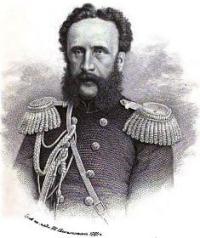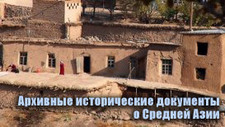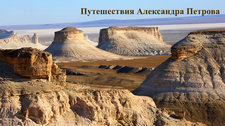Вы здесь
Petr Uslar on poem Kozy-Kurpesh and Bayan-Sulu..

Bayan-Sulu and Kozy-Korpesh Mausoleum in Ayagoz Steppe.
"There is a very colorful and imaginative legend surrounding the monument "Kozy-Kurpesh and Bayan-Sulu" in the Kazakh steppe and far beyond, which has captivated and continues to captivate many researchers working in the steppe. A comparatively extensive literature has been devoted to both the monument itself and the legend, yet it has not yet clarified either the origin of the monument itself or the extent to which the Cossacks of the steppe attached the legend to this monument, which, according to their legends, was built by the Kalmyks, were purely coincidental." It's also unclear whether the legend is a monument of Kazakh national creativity, or whether it was borrowed from other peoples who had to deal with the Cossacks along their historical paths."
Ivan Chekaninsky. "Notes of Semipalatinsk Department of Society for Study of Kazakhstan." 1929.
Ayagoz River Valley and villages of Tarlauly and Tansyk.
By the way, about Kyrgyz songs. Quite a few of them tell the story of the adventures of two lovers, whose graves are visible not far from Ayaguz. A collection of these songs, arranged in order, constitutes a complete poem, similar to the one sung by dervishes beyond the Caucasus about the varied adventures of the famous Turkish bandit Ker-oglu. I'll tell you, as best I can remember, the content of the Kyrgyz poem.
"Once upon a time there lived two rich sultans, Karabay and Sarybay. The first had a son, Kozu-Kurpech, and the second a daughter, Bayan-Sulu.
"The fathers betrothed their children at birth. The little ones grew up together, and their mutual love developed as quickly as Bayan-Sulu's beauty and Kozu-Kurpech's valor. The time was not far off when the wedding celebration would crown their tenderness, when Karabai suddenly died, and young Kozu-Kurpech, left an orphan, was completely ruined.
This circumstance did not diminish the beautiful Bayan-Sulu's passion in the least, but Sarybai refused to give her to a poor man, heeding the advice of his slave, the Kalmyk Kodar, who himself had designs on his master's daughter and therefore plays the role of the evil genius of our lovers in the poem.
Hence begins the long series of misfortunes for Kozu-Kurpech, whom Kodar persecuted in every way, trying to rid himself of his dangerous rival. Finally, Kozu-Kurpech perished at his hand. But the accursed Kalmyk's atrocities didn't end there.
That night, he stabbed Sarybai to death and kidnapped the beautiful Bayan-Sulu. He rode with her for a long time in the desert, fearing pursuit; finally, Bayan-Sulu begged him to stop and give her water to quench her unbearable thirst. There was a well nearby, but there was nothing to draw from, so Bayan-Sulu persuaded Kodar to climb down for water.
He foolishly listened; the beauty pushed him into the water, and Kodar remained, as if at the bottom of the well. Having rid herself of the villain, Bayan-Sulu went to Kozu-Kurpech's grave to mourn her beloved and then end her miserable life. Just as she was about to raise the knife, 40 wandering sorcerers rode up to her.
They stopped her from committing suicide and, captivated by her wondrous beauty, begged her to choose a husband from among them. Bayan-Sulu promised to fulfill their request, but on the condition that they, through the power of their magic, resurrect Kozu-Kurpech for three days and allow her to spend that time alone with him.
The loving sorcerers agreed. Kozu-Kurpech emerged from the grave, as if nothing had happened, and Bayan-Sulu embraced him. After three days, Kozu-Kurpech again turned into a half-decayed corpse. Bayan-Sulu died of grief, and the returning sorcerers, finding both lovers dead, buried them in the same grave.
Thus ends this wild poem. Why the sorcerers didn't use their art, resurrect Bayan-Sula, and force her to fulfill her promise - no one could explain to me.
Authority:
P.K. Uslar. "Four Months in Kirghiz Steppe." 1848.







